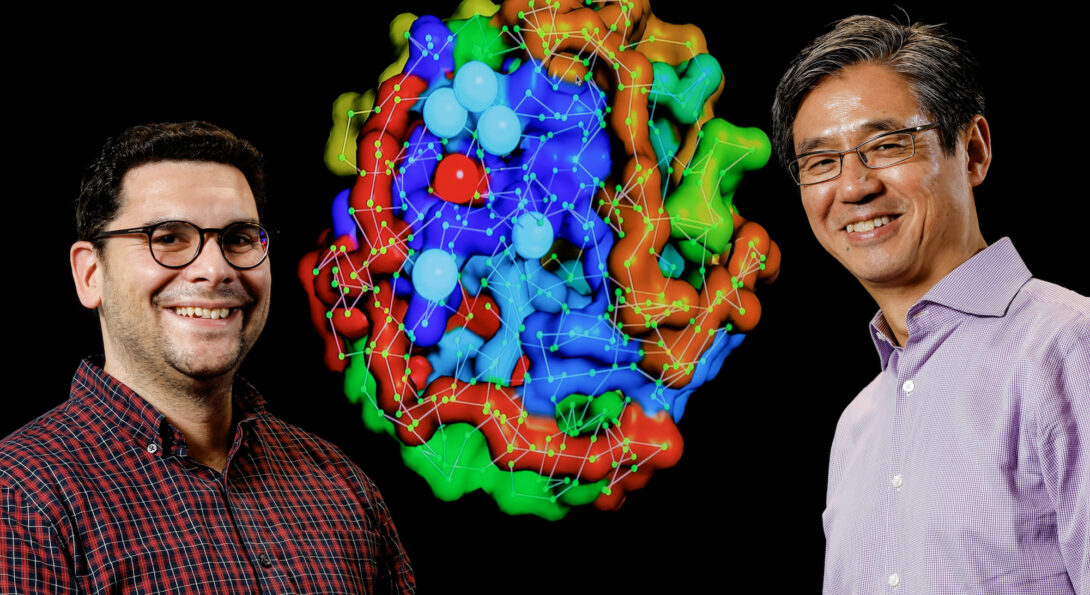Liang and Chronis receive Department of Energy INCITE Award to study 3D genome folding

text
Richard and Loan Hill Professor Jie Liang of the Department of Biomedical Engineering and Assistant Professor Kostas Chronis of the Department of Biochemistry and Molecular Genetics in the College of Medicine have been awarded a grant through the U.S. Department of Energy Innovative and Novel Computational Impact on Theory and Experiment (INCITE) program. This grant will allow them to study how a genome folds in the three-dimensional space inside the cell nucleus in different tissues.
The INCITE award is designed to enable researchers to pursue transformational advances in science and engineering and provides access to equipment from Argonne National Laboratory and Oak Ridge National Laboratory.
As 3D genome organization and modifications are the basis of cellular functions, the award will provide the computational resources to help Liang and Chronis to construct large ensembles of 3D models at unprecedented high resolution and accuracy. In doing so, this work will allow them to examine the structural basis of genome folding and genome functions. The results will provide an atlas for the discovery of how genes at different positions form different spatial structures, how they define cellular states, and how they control gene expression.
“The 3D genome has to be properly folded so the appropriate nuclear organization can be maintained, and essential fundamental cellular processes such as regulation of gene expression and cellular specialization can proceed,” Liang said. “3D genome folding enables various genomic functions, allowing cells with identical genomic DNAs to differentiate into skin, bone, liver and other tissue types.”
With 3D models of genome folding, genetic mutations and the diseases they may cause will be better understood, so new approaches can be developed for disease treatment.
“We’re looking at how individual genetic mutations, called variations, might be involved in three-dimensional space gene control,” Liang said.
Moving forward, he hopes to continue this work on a larger scale to include a broader array of cell and tissue types at higher resolutions and incorporate more details.